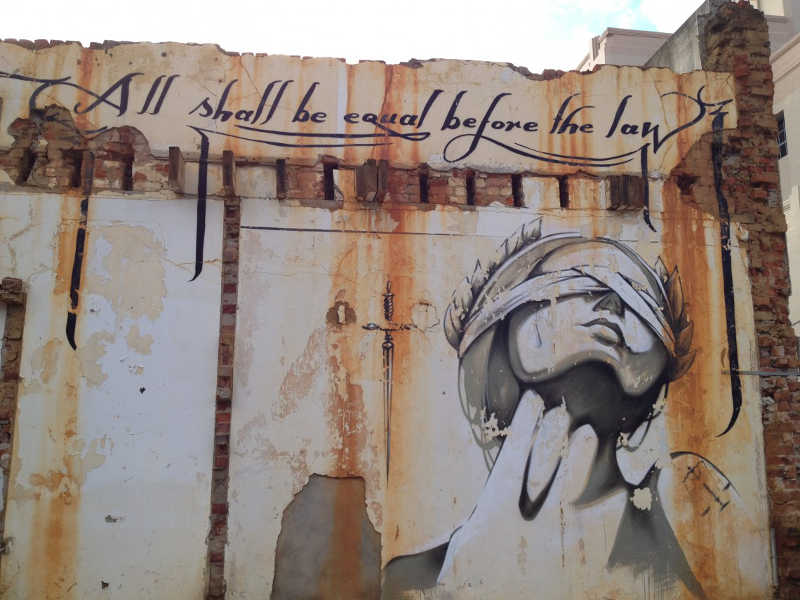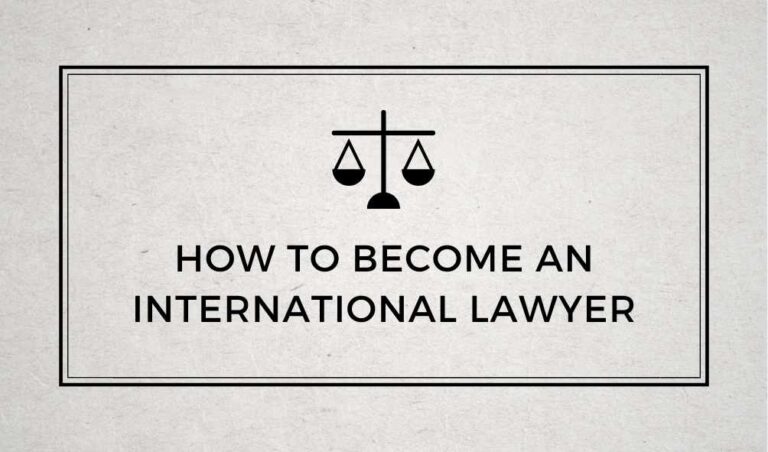How to Become an Art Lawyer?

To become an art lawyer, you must obtain a law degree and specialize in art law through additional courses or experience. Art lawyers provide legal counsel to artists, collectors, galleries, and museums, navigating issues such as copyright, contracts, and intellectual property rights.
Table of Contents
How to Become an Art Lawyer? These professionals may also assist with art transactions, appraisals, and disputes. With a deep understanding of both the art world and legal principles, art lawyers play a crucial role in protecting artistic creations and ensuring their artists’ rights are upheld.
If you are passionate about art and law, pursuing a career as an art lawyer can be a rewarding and fulfilling path.
Education And Qualifications
When it comes to pursuing a career as an art lawyer, having the right education and qualifications is crucial. Understanding the intricacies of both law and the art world is necessary to navigate the complexities of this field successfully. Earning a Bachelor’s Degree in Law, specializing in art and intellectual property law, is the first step towards becoming an art lawyer. For those who want to delve deeper into this subject, pursuing a Master’s Degree in Art Law can further enhance their knowledge and expertise.
Bachelor’s Degree In Law
A Bachelor’s Degree in Law forms the foundation of a career in art law. This degree prepares individuals with a solid understanding of legal principles, case studies, and the various aspects of the law. It provides a comprehensive overview of the legal system, equipping students with the necessary skill set to analyze and tackle legal issues. Moreover, specializing in art and intellectual property law during this degree program helps aspiring art lawyers gain a deeper understanding of the specific legal challenges faced in the art world.
Focus On Art And Intellectual Property Law
During their undergraduate studies, aspiring art lawyers should prioritize courses that focus on art and intellectual property law. These courses provide essential knowledge about copyright, trademark, licensing agreements, and other legal aspects that are specific to the art industry. Understanding intellectual property rights is particularly critical as it enables art lawyers to protect artists’ creations and navigate issues related to infringement, reproduction, and distribution of artworks.
Optional: Master’s Degree In Art Law
While a Bachelor’s Degree in Law is sufficient to start a career in art law, earning a Master’s Degree in Art Law can provide individuals with a competitive edge. This advanced degree offers a specialized curriculum that delves deeper into the legal, ethical, and business aspects of the art world. It enables students to understand the global art market, international art law, cultural heritage law, and the challenges faced by artists, collectors, museums, and galleries. Pursuing a Master’s Degree in Art Law ensures that aspiring art lawyers acquire in-depth knowledge and expertise to handle complex legal matters in the art industry.

Credit: hls.harvard.edu
Building Legal Experience
Building a successful career as an art lawyer requires a strong foundation of legal experience. This can be attained through various avenues such as internships, working at law firms with art law practices, and gaining expertise in intellectual property law.
Internships At Art Law Firms Or Galleries
Internships at art law firms or galleries provide invaluable hands-on experience in the intersection of art and law. Through these opportunities, aspiring art lawyers can gain insight into the legal intricacies of the art world, including contract negotiation, provenance research, and art transaction regulations.
Working At A Law Firm With Art Law Practice
Joining a law firm with a specialized art law practice allows aspiring art lawyers to immerse themselves in the field while honing their legal skills. This experience provides exposure to a wide range of art-related legal issues, from art litigation to art investment structuring.
Developing Expertise In Intellectual Property Law
Specializing in intellectual property law is essential for aspiring art lawyers, as it lays the groundwork for understanding the legal aspects of art ownership, copyright, and artist rights. Through focusing on intellectual property law, individuals can develop a deep understanding of the legal framework that governs the art industry.
Networking And Building Connections
Networking and building connections play a crucial role in becoming a successful art lawyer. Not only does it allow you to establish yourself within the art world, but it also opens doors to new opportunities and clients. In this section, we will explore three effective strategies for networking and building connections as an art lawyer: joining professional art law organizations, attending art fairs and industry events, and connecting with artists, collectors, and galleries.
Joining Professional Art Law Organizations
Joining professional art law organizations is a fantastic way to network with like-minded individuals and stay updated on the latest developments in the field. These organizations often host regular meetings, conferences, and workshops that provide invaluable opportunities to connect with other professionals.
Here are a few renowned professional art law organizations that you should consider joining:
| Organization | Benefits |
|---|---|
| Art Law Committee of a Local Bar Association | – Access to legal resources and guidance – Networking with local art lawyers and professionals – Opportunities to participate in educational events and panels |
| The International Foundation for Art Research (IFAR) | – Access to research publications and databases – Membership directory to connect with other art law practitioners – Discounts on art law conferences and events |
| The Art & Cultural Heritage Law Committee of the American Bar Association (ABA) | – Networking with leading art law experts – Participation in committee meetings and discussions – Access to specialized publications and resources |
Attending Art Fairs And Industry Events
Art fairs and industry events are bustling hubs where artists, collectors, galleries, and art professionals gather. Attending these events presents a golden opportunity to network with key players in the art world. As an art lawyer, you can connect with potential clients, discuss legal matters, and establish mutually beneficial relationships.
When attending art fairs and industry events, keep these tips in mind:
- Research the Event: Prioritize events that attract artists, collectors, and galleries relevant to your specialization.
- Prepare Your Elevator Pitch: Craft a succinct and compelling introduction that highlights your expertise and how you can assist artists and collectors with their legal needs.
- Engage in Meaningful Conversations: Actively listen, ask thoughtful questions, and demonstrate your knowledge and passion for the art industry.
- Exchange Contact Information: When connecting with potential clients or industry professionals, always exchange contact information to foster future relationships.
Connecting With Artists, Collectors, And Galleries
Connecting directly with artists, collectors, and galleries can expand your network and lead to valuable referrals. Building relationships within these spheres not only solidifies your position as an art lawyer but also enables you to understand the unique challenges and needs of each party.
Consider these strategies to connect with artists, collectors, and galleries:
- Attend Art Exhibitions: Attend local art exhibitions to meet artists and engage in conversations about their work.
- Visit Art Galleries: Spend time exploring art galleries and developing relationships with gallery owners and curators.
- Engage on Social Media: Follow and interact with artists, collectors, and galleries on platforms like Instagram, Twitter, and LinkedIn.
- Offer Pro Bono Services: Provide free legal advice or assistance to artists or galleries, enhancing your reputation in the art community.
By actively participating in these activities, you’ll nurture connections that can lead to new clients, collaborations, and a thriving art law career.

Credit: law-arts.org
Specializing In Art Law
As an art law specialist, I can guide you in becoming an art lawyer, offering unique insights and expertise in this field. Discover the path to navigating the legal landscape of art and protecting the rights of artists and collectors.
Gaining Knowledge In Art Market And Trends
To specialize in art law, it is crucial to have a solid understanding of the art market and its ever-evolving trends. This involves staying up to date with the latest news, attending art fairs, and immersing oneself in the vibrant art community. By actively engaging with artists, collectors, and gallery owners, an art lawyer can gain valuable insights into the current state of the art market and the emerging trends that are shaping it. This knowledge helps them provide informed advice and representation to their clients, ensuring their legal needs are met effectively and efficiently.
Understanding Cultural Property Laws
A significant aspect of specializing in art law is having a deep understanding of cultural property laws. These laws are designed to protect culturally significant artworks and artifacts, ensuring their preservation and preventing their illicit trafficking. An art lawyer specializing in cultural property laws should be well-versed in international conventions, national legislation, and the ethical guidelines established by organizations such as UNESCO and the International Council of Museums. This expertise allows them to navigate complex legal landscapes and assist clients in matters related to provenance research, repatriation claims, and cultural heritage preservation.
Handling Art Transactions And Contracts
Another vital skill for an art lawyer specializing in art law is the ability to handle art transactions and contracts. Art transactions can involve a wide range of legal considerations, including authentication, title transfer, pricing, and consignment agreements. With their expertise, an art lawyer ensures that all necessary legal formalities are met, protecting their clients’ interests and mitigating potential disputes. Whether it’s negotiating contracts, drafting agreements, or resolving conflicts, an art lawyer’s attention to detail and understanding of the legal intricacies surrounding art transactions are invaluable.
By specializing in art law, an attorney can offer their clients the expert legal guidance necessary to navigate the complex and often intricate world of the art market. With knowledge in art market trends, an understanding of cultural property laws, and the ability to handle art transactions and contracts, an art lawyer becomes an invaluable asset to artists, collectors, galleries, and cultural institutions in safeguarding their interests and protecting the integrity of the art industry.

Continuing Education And Professional Development
Continuing education and professional development are essential for becoming a successful art lawyer. In the rapidly evolving field of art law, it is crucial to stay updated with the latest legal developments and industry trends. This requires actively participating in various learning opportunities and obtaining relevant certifications to enhance expertise in this niche legal area.
Attending Art Law Conferences And Seminars
Art law conferences and seminars offer invaluable opportunities to network with peers, gain insights from seasoned professionals, and stay abreast of emerging legal issues. By attending these events, aspiring art lawyers can expand their knowledge base, connect with industry leaders, and keep pace with the ever-evolving art market dynamics.
Keeping Up With Legal And Industry Updates
Staying informed about current legal and industry updates is critical for art lawyers. Subscribing to legal publications, following reputable art law blogs, and regularly reviewing relevant case studies and court rulings facilitate a deep understanding of the shifting legal landscape in the art world. This ongoing awareness ensures that legal practitioners can provide informed counsel and representation to their clients.
Obtaining Art Law Certifications
Acquiring specialized art law certifications demonstrates a commitment to expertise in this niche field. These certifications validate an art lawyer’s proficiency in areas such as provenance research, art market regulations, and cultural heritage laws. Such credentials not only enhance credibility but also boost the ability to handle complex art-related legal matters effectively.
Conclusion
Becoming an art lawyer requires passion, education, and dedication. With a strong understanding of art history and legal principles, you can navigate the complex world of art law. By building a strong network and gaining hands-on experience, you can position yourself for success in this specialized field.
Embrace the unique challenges and opportunities that come with being an art lawyer, and you can carve out a rewarding and fulfilling career in this fascinating intersection of law and the arts.
Introducing Jonah Plum, a legal luminary whose journey through the corridors of justice has been intertwined with the eloquence of the written word. Born and raised in the vibrant city of Seattle, Washington, Jonah's early fascination with language and debate laid the foundation for a remarkable career in law.
Jonah's scholarly odyssey began at Harvard Law School, where they immersed themselves in the study of jurisprudence, honing their analytical prowess and legal acumen. Armed with a law degree, they entered the legal arena, navigating courtrooms and boardrooms with a fervor for justice. Yet, it was the realization of the transformative power of the written word that led Jonah to pivot from legal briefs to the world of blogging.
A digital advocate in the truest sense, Jonah recognized the need for demystifying legal concepts and making them accessible to a broader audience. This blog, a virtual repository of legal insights, transcends geographical boundaries, connecting with a global readership hungry for clarity amidst legal complexities.
Beyond the black letter of the law, Jonah delves into the human stories that underscore the legal landscape. Their writing goes beyond legal analysis, weaving narratives that humanize the law, shedding light on its impact on individuals and society.






